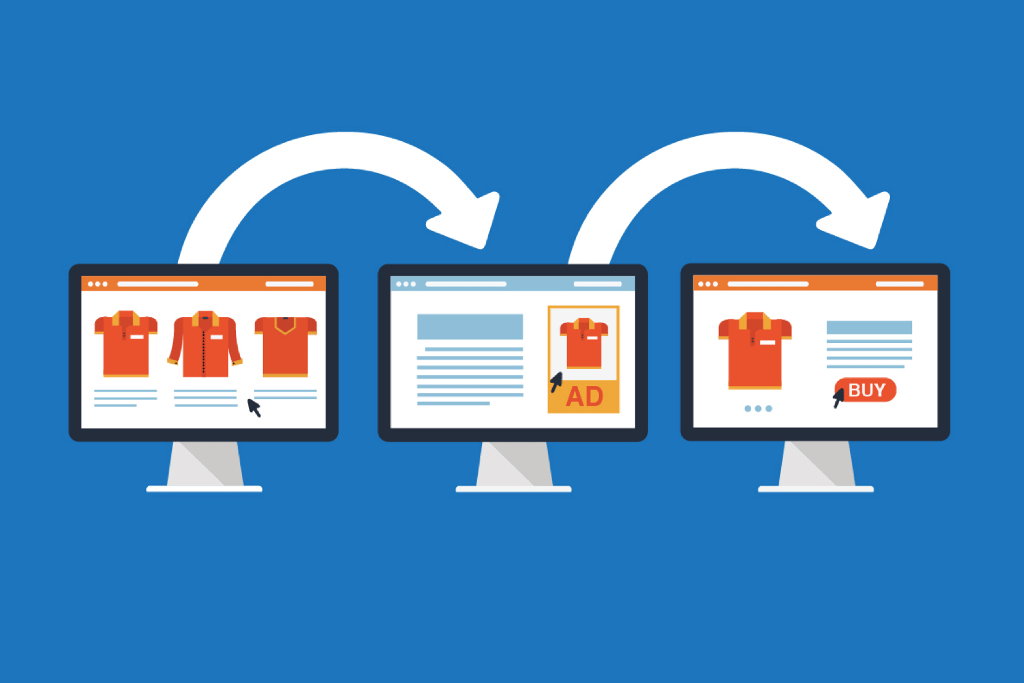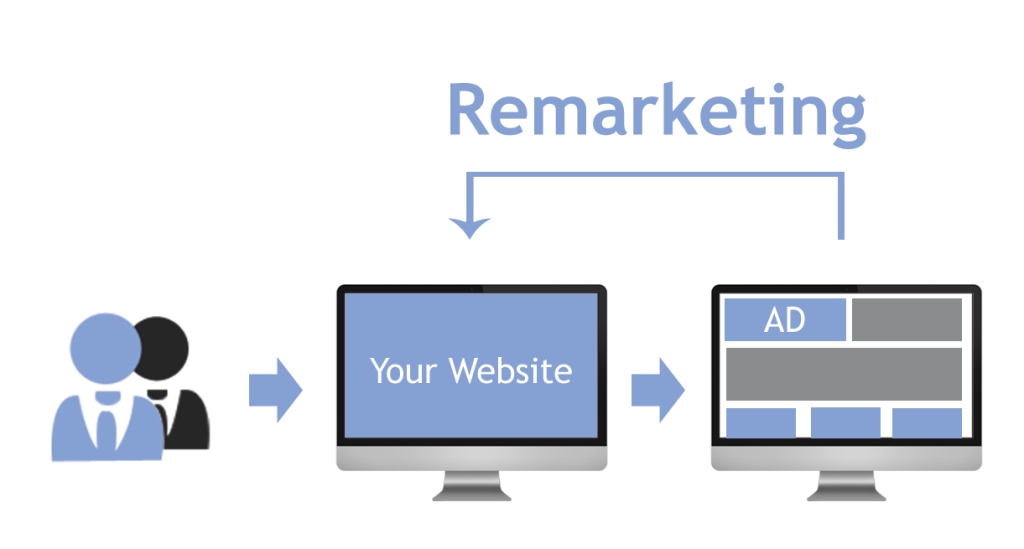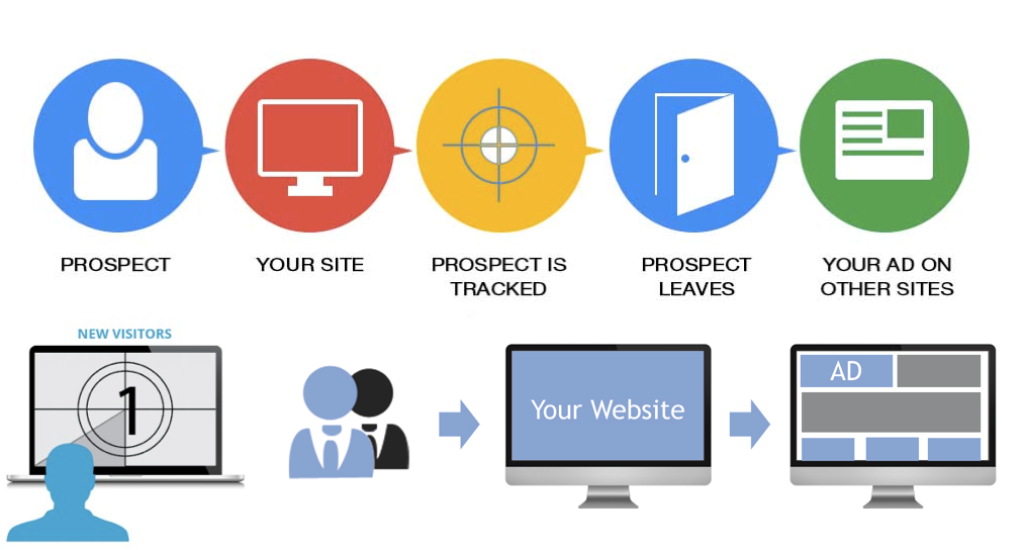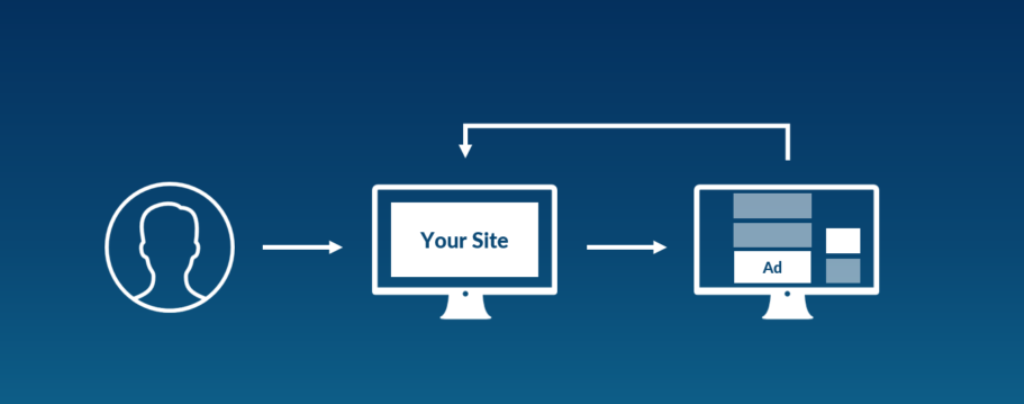A dependable strategy for increasing click through, remarketing features in a growing number of digital marketing campaigns. Boasting up to 10x the click through rate of the average Display Ad, remarketing is gaining traction in the digital arena. So, what exactly is it?
What is Remarketing?

Remarketing, often known as retargeting, is your second chance to build a relationship with the 98% of website visitors that come away with nothing. It is a chance to increase the possibility of a purchase by moving them along the conversion funnel, from awareness to advocacy, and one all business should think about.
A person who has visited your website is more likely to be interested in your offerings. So by focusing on this audience, you can increase, even double, your conversion rates and get the best return on your investment.
People don’t always buy on their first visit to a website – and therefore are essentially window shoppers at first. By reinforcing your brand to your audience when they are most susceptible to your advertising means you have a much greater chance of click through. This may be when they are online and searching or when they have an item in the basket but never completed a transaction with you.
How Remarketing Works

Step 1 – Collect Potential Consumer Data via Cookies
Remarketing works by using data from your visitors’ experience on your web page to build a profile of your potential consumer. That data culminates in a cookie ID. The cookie ID supplies data back to you, on the pages of your website that a user visited, how long they spent, if they used the shopping basket feature, etc. From this, you are able to make informed decisions on how best to reach that person, and attempt to convert them into a consumer. Except you are doing this, with not one person – but you are setting a machine up to target hundreds of these people at one time. How do you do that?
Step 2 – Targeting Using Modifiers

By using modifiers within a remarketing platform like Google Adwords, you can target everyone that started but didn’t complete a transaction with a call to action or for anyone that viewed a certain product page, you can show them that product again. You can essentially design advertisements that reach your desired audience. Because they have visited you before, your cookie data will reveal enough about them to bring the most efficient targeted ads possible.
Let us use the example that you run a bulk ice cream retailer. A user has visited your site (accepted the cookie Ts&Cs) and spent a couple of minutes browsing your page. In this time they see that you stock a certain flavour of ice cream and they spend some time on this page, they decide to add a number of crates to their basket. They don’t complete the order and leave the website. Maybe they were shopping around for the best deals? So close, but yet so far.
Being proactive and remarketing to that potential consumer means that you re-engage them. With the right advertisements, at the right times – that person might return to buy your ice cream.
Step 3 – Using Remarketing Effectively: How Do I Do to Get Them Back?
For the best remarketing results, use data on the products or pages they viewed to influence which adverts you show. If they reached the basket but failed to complete a purchase, you could offer free shipping or a time-sensitive discount such as a direct call to action. And if they didn’t reach the check out, a subtle reminder of your offerings can be effective.
It is also about the type of remarketing that you choose which makes a huge difference. Text and display Ads can both leave lasting impacts, but choosing the right one is essential. Appealing to a person in the moment is important, whether it is lunch time, sunny outside or evening time is all information you can use to make this decision. For example, an image of a dripping ice cream on a scorching day might gain more clickthrough than a text alternative.
There is no right or wrong answer and some of this takes testing which we will go in to later, but remarketing relies on making the best choice between the use of display ads and search ads. Display ads are visual ads featured on the side of a search browser and search ads are written ads that appear when a user searches certain keywords. Both can be hugely effective in the right scenario. While we may prefer to see an ice cream displayed on our screen, we would likely prefer to see a job advertisement in writing, with an easily clickable link. And those are the basics of how to do remarketing.
Remarketing: Is It Intrusive?

The biggest argument against remarketing is that people hate it. But that simply is not true. While it is important to refrain from crossing the trust-privacy line, only 11% of people dislike being retargeted, compared with 30% that are positive towards it and 59% who are indifferent.
Another common myth about remarketing is that it only reaches people that have not bought from you before. This is not the case; you can target anybody who at has visited your website in the past. This includes bringing people back who have already bought from you before.
Remarketing Best Practices: Getting it Right
Good remarketing techniques make the right noises and does not make customers uncomfortable. Be creative, selective in your targeting and don’t cross the trust-privacy line. A good PPC agency will ensure your remarketing is carried out in the most subtle way possible, without sacrificing the effectiveness.
Half of the job is the targeting, the other half is creating an eye catching Ad. Your visitors have already played hard to get, they ran away from your website once – how are you going to ensure that they don’t repeat the trick?
1.Trial and Test Your Ads

Remarketing is hugely effective in increasing your click-through rate and the best way to get it right is by testing your ads. Those ad tests and bid tests can make a huge difference to the conversions that you make. Spend time experimenting with your ad’s images, landing pages, CTA’s and keep tabs on how your remarketing campaigns are going with regular analysis for the best click-through rate possible. An exciting call to action or dynamic imagery can really attract them back and prompt a purchase.
Consider what your visitor is going to expect when they see your ad again. Some users may want to see the familiar style they saw on their first visit, some may prefer something fresh and more demanding. Analyse your click-through and amend to what you know works.
Think about the size of a display advertisement, some gain more click-through than others. leaderboard, medium rectangle and full banner ads are particularly popular and allow you creative freedom in design.
Responsive Ads are a feature within the Google Display Network which allow your ads to fit in various forms. Google will assemble your ads using the images, text, headings and logos that you upload, to fit in any size of advert. Their versatility can save time and money, also working across the Google Search Network. However, this can mean a compromise on aesthetics.
For search ads, explore long-tail keywords or keywords with some relevance, in terms of current affairs, news or popular culture. Some of the best campaigns have used this extremely effectively, not least Ann Summers during the build up to the 2010 elections where they made a series of topical innuendos.
It is essential to test your bids to maximise the number of conversions that your remarketing ad produces. Monitoring where and when you show your advert to your target person is important, this is arranged using frequency capping.
2.Scheduling & Frequency Capping: Keep Your Audience Engaged

Frequency capping allows you to control how many impressions your visitor receives of an ad each day, week or month. This can help ensure your ads are useful and engaging, without irritating your users. While you don’t want to inundate an audience with too many impressions of your ad, it is proven that conversion rates increase alongside ad impressions, meaning if a person sees an ad a few times, the more likely they are to engage and convert – twice as likely in fact.
Most platforms such as Google Adwords will offer you three months to chase your potential customers before the cookie information runs out. If you are after a quick sale then you may want to reduce this timeframe, if you are after a more long-term approach, focussing on growing the awareness of your brand then a longer campaign can be highly effective. For selling your ice cream, try and catch buyers on days with good weather forecast or just before lunch when they may be in the most optimistic, bullish frame of mind.
3.Create Specific Lists

A remarketing list allows you to be more targeted in the delivery of your ad. Setting rules for who you want to target can maximise your end results. For example, you can remarket a specific ad to anyone that visits a certain page on your website.
Conclusion: Remarketing is The King Of Click-Through
Not only is remarketing a must for brand awareness, it is an exemplary and often cheap way of increasing your click-through, and conversions. Some business can double, triple, quadruple their regular click-through figures with remarketing, some boasting around 10 times the click-through of regular display ads. Perhaps even more importantly, remarketing can increase your conversions by around 51%, surely making a remarketing budget a must.

